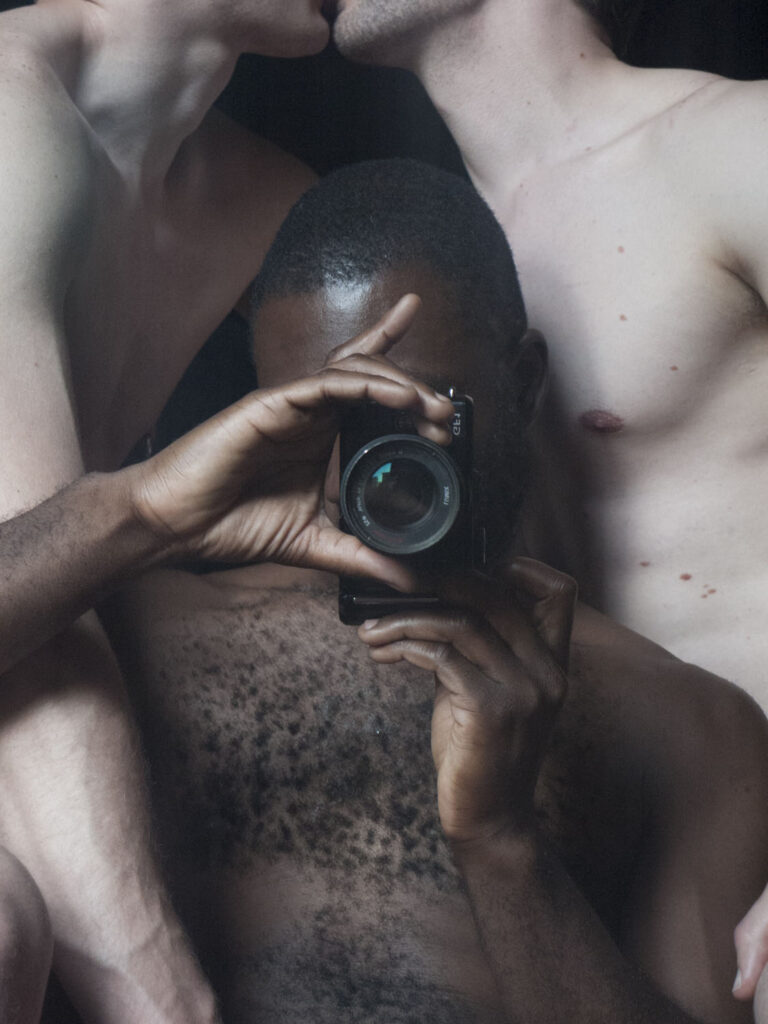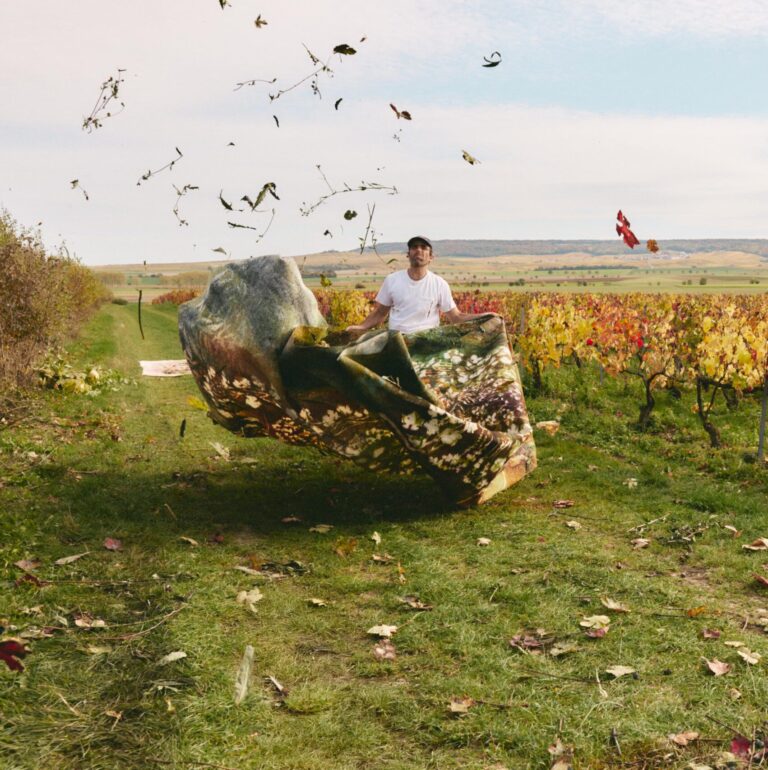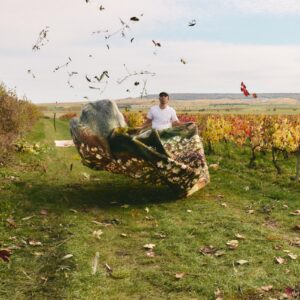
Zesty Meyers: I want to go back to when you got started, around the early ’90s. How do your dreams from that time compare to those you have today?
KAWS: I have always been interested in communication. Even back then, I was a young kid trying to make work—and get work into the world—and it hasn’t changed much.
How did you get started with graffiti? It was just the thing that was in front of me. Other guys were doing it, it was a little bit of socialness and a little bit of art. I wasn’t inclined towards sports—you just sort of work with what you have. But while I would do graffiti on nights and weekends, I would also be looking at Sargent and studying all these different painters and, you know, just sort of finding my way around what it would be like to be an artist.
Your spectrum runs from toys at a more affordable price to whatever a large sculpture in wood or bronze goes for now. Is that important to be effective?
When I am making work I think of when I was younger and how I came upon work, whether it was magazines, stickers, skateboard deck designs or T-shirts. These different things meant something for me when I was younger. All you know is your world that is exciting to you, so I try to make work that disseminates in the same sort of avenues as the stuff that led me to learn about the greater picture of art. So if I am making a large sculpture, I am also thinking about how to make these smaller accessible objects that people will come across in a more candid way.
Are there things you still want to make that you have never tried before?
I always want to explore and learn about different companies, how things are made. That is why I like to do collaborations, because you gain an insight into how people operate and even if it’s bad, at least you’ve figured out that is what you don’t want to do.
You’ve mentioned being interested in the next generation, finding young people to be the next generation of what you have accomplished.
Yeah, definitely. I guess that I saw graffiti as a gateway. Or seeing what Keith Haring did with the Pop Shop and seeing how that kind of opened up the art world and benefited many.
Did you used to go over to Lafayette Street? That place was amazing.
Yeah, totally. Certain things have made an impression on me and I am very conscious of that to this day.
Are there any dream projects that you haven’t accomplished yet?
I try to focus on what is in front of me. I never set goals. Like, right now I have these projects and I am going to do them the best I can and—knock on wood—it usually winds up rolling into something else or some other opportunity. It’s like I’ll do something and think, ‘Wow, this is great,’ and something else will develop from it that I couldn’t have imagined.
From the maquette to the toys to the bigger sculptures, do you always begin the same way?
Projects always start small, everything starts small. I work with a sculptor in Japan and we handmake the things in clay. After that I do a maquette and we decide what the materials will be, wood or bronze. What materials and what scale it will be. And that usually just depends on the project. If I know there is something on the horizon then I try to create a sculpture that has a sensibility that will fit that.
Have you ever been traveling somewhere and stumbled upon one of your works that you didn’t know was there?
I’m pretty relentless about knowing where everything is. I mean, we keep track of almost everything. At times we find someone has a painting and we’ll be surprised, but not with the sculptures—we know every one.
I was in Hong Kong about two weeks ago and I went to this Buddhist temple and then walked a couple of blocks away and there was a café with one of your sculptures in it.
Was it Vivo?
Wow, so you really do keep track of everything!
I do. It’s good to know, so when we do a show it is easy to pull things together. The art world is tricky. You hope that your work is going to places where it is appreciated and not, you know, just acquired for speculation.
Is there anything you want people to know about your work or who you are?
I’m definitely not the person to try to preach. If someone discovers my work by picking up a magazine, I hope it is a starting point for them to actually learn about what I do and what I am interested in and explore what that is. Whenever I am reading artist’s books or following people it is always interesting to see what they were around or who they are influenced by or who their peers are.
And are you always looking to grow your collection? Are you consciously seeking works?
Whenever I am not making art I am thinking of other art. It’s fun for me. It just gets my head away from being totally in my own bubble.
Let’s talk about your show at Fort Worth. It’ll be open when the magazine is out. It’s your biggest museum show, isn’t it?
It is the first time I am doing a ‘quote’ survey. It starts in ’96 and goes through this year. It is interesting to have all the bodies of work in one space and have your fam around to see the story line drawn out that way. We’re doing the hang more visually thematic than chronological. A lot of times, like when I was working on the shape canvases, I was able to revisit old imagery. You’ll see this pattern—going back to existing work to pull it into the new processes. It’s interesting for me to observe, too.
And are the “X’s” just eyes or do they mean anything?
That’s something that began when I started painting over ads and billboards in ’93. I just started using the skull and cross for imagery and I stopped using lettering. I thought it brought more of an audience than graffiti did. I wanted to communicate further than the surface I was already working in. So I started working with the skull and crossbones around the time I moved to Manhattan. The X was the simplest form of that. If I had to pare it down to the most recognizable point, it would be X—and I haven’t gotten bored of it.
Did you paint on the walls of the museum for this new show?
Yeah, there is one section where we painted on the walls. I don’t do it that often but I think it is a fun way to break up the space.
That’s great. So it is just there for a couple of months and then they have to paint over it and the work disappears.
That is something I love to do. Create environments that I haven’t really done before, from floor to ceiling to everything. A lot of times when I make exhibitions with galleries I think about the space and respond to the architecture. I went on a site visit to the High Museum, when I was preparing for my show there, and saw the Piano building and all the circular skylights. That is what made me want to create those circular pieces on that scale and hang them the way I did for that show.
You have changed the senses of people because you have related them with something they might have not seen. But they would feel it.
Yeah, exactly. There is a sort of nice co-existence.
It’s nice to see that you were inspired by the architecture.
At the end of the day it is changing the environment for a small time, you know. I’m not permanently taking over his space.
Can you tell me about the wooden sculptures you’ve been working on lately? Are they unique or editions?
The large ones are unique but then we have editions on a smaller scale. There is a black, a natural wood and there is a medium tone. So we will do the same sculpture in different scales.
And how big is “big” now?
Big is 30 feet. The first wood sculpture we did was the 10-meter sculpture.
I don’t think many people are making 10-meter- tall sculptures.
Yeah, I don’t know how I got into it. My first sculpture was a commission for Hong Kong’s Harbour City and they produced the piece and shipped it back to me. I was just finishing my first museum show with The Aldrich, and their sculpture area in the back was open and they exhibited it there. I sold it soon after.










 in your life?
in your life?

